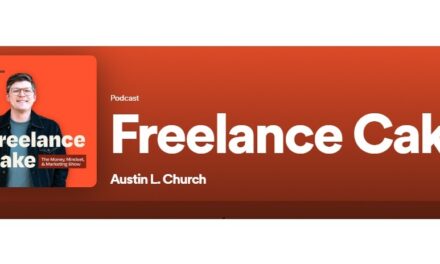“Consulting is dead.”
The headline screamed from the top of the front page of The Wall Street Journal last week.
A print version of Clickbait was clearly an ad — black text over a bright yellow-saturated page — but it got me thinking and made me want to read the rest of the page. And when I did, I came away with two thoughts.
First, the consulting firm Embark, which did the ad and a related campaign, knows how to get their innovative marketing to create conversations.
And second, consulting is far from dead for content entrepreneurs. In fact, The Tilt research finds it’s the most frequently used and most profitable revenue stream. Forty-nine percent of those surveyed sell consulting services, followed by books for 37% of the entrepreneurs.
Let me explain.
Innovative marketing: The consulting-is-dead campaign comes from Embark (and its creative agency, Angry Gods). The message? The big consulting firms’ traditional rise-and-grind culture no longer aligns with the values of the workforce. Forward-thinking firms, like Embark, are changing the model to put happiness first. “Happy is good for business, and people do their best work when they’re happy,” says CEO Clancy Fossum.
That’s a differentiator for Embark as a consulting firm. But the campaign is the real differentiator. The front-page ad led readers to a full-page ad inside the April 23 edition detailing the message.
Now, Embark is sending that edition in physical coffin-shape boxes to CFOs around the United States – their target audience. The campaign culminates with a “funeral procession” with a hearse adorned with floral arrangements spelling “RIP Consulting” will go through New York. And no campaign, no matter how disruptive, would be “complete” without a social media takeover in partnership with industry influencers.
Now, you don’t have the budget for a campaign requiring ads in The Wall Street Journal. But you do have a creative mind. What unexpected event or thing could you do to attract your target audience or the media outlets they consume?
Consulting as a service: Of course, Embark’s campaign is tongue-in-cheek. Management consulting is a $1 trillion industry. But how can it work in your content business?
As an expert creator, you’re growing a business based on specialized knowledge or passion. For your consulting revenue stream, think about what you know – and how you can help others benefit from that knowledge. You may teach them a skill or strategy, but more likely, you’ll advise them on how or why to do something.
For example, an entrepreneur with a content tilt about social media could teach consulting clients how to use social media. Still, they’re more likely to create a social media marketing strategy for the client and advise them on how to use it.
Structure your fee: In designing the revenue stream, you must decide how to charge. You could pick one or several options. Just don’t offer too many choices publicly (i.e., on your website) so that your potential consulting clients get confused and move on.
In a retainer model, you gain from an ongoing relationship. Typically, the client pays a set fee for a predetermined number of hours in a month’s worth of consulting services. Additional hours require an additional preset fee.
In a project model, you benefit from establishing fixed parameters for the work and the fee for that work. In this case, you and the client should agree on a detailed scope of work before you begin the initiative. Identify the end goal and the elements required to get there.
In an hourly model, you earn a set fee for every hour of service requested from the client. If you or the client are unsure of what services they need or how long they’ll need them, this model can be a good option. In this scenario, you also must closely track and detail the time you spend on your monthly invoices.
Operate the consultancy: Promote your consulting services on your website and other owned and marketing properties. You can post your fees publicly, but I don’t recommend it. It’s OK to explain your pricing models, but if you post the actual prices, you eliminate the opportunity for customization and a better understanding of how you can deliver what your clients need.
If you find public pricing might weed out prospects who can’t afford your services, just include a starting point, such as “Monthly retainers start at $1K.”
Get everything in writing. Though many say a contract protects you legally, it has an even more practical and common purpose – it establishes the expectations for you and your client. It should include a detailed scope of work, the responsibilities of each party, and the compensation terms. (If it’s a client with multiple people involved, ask them to designate your primary point of contact. Otherwise, you could end up in an indecisive and reply-all mess.)
Finally, though you should do it first, track your time. Even if you don’t charge by the hour, you need to know whether you’ve appropriately estimated your time when pricing retainer or project fees. I’ve mentioned it before, but I like the free Toggl tracker, but there are many options. At a minimum, track the overall hours. But if you want to take it a step further, track how long each element in the scope of work takes – the resulting report may be revelatory.
We all know the exclamation, “Consulting is dead,” is dead wrong. However, Embark’s campaign can be the right motivation for innovative marketing and a reminder that consulting is the most popular revenue stream for content entrepreneurs.
About the author
Ann regularly combines words and strategy for B2B, B2C, and nonprofits, continuing to live up to her high school nickname, Editor Ann. An IABC Communicator of the Year and founder of G Force Communication, Ann coaches and trains professionals in all things content. Connect with her on LinkedIn and Twitter.










